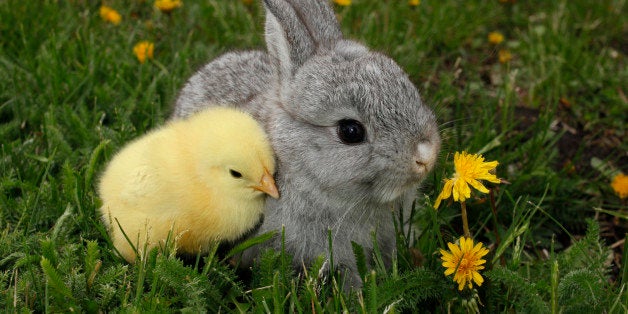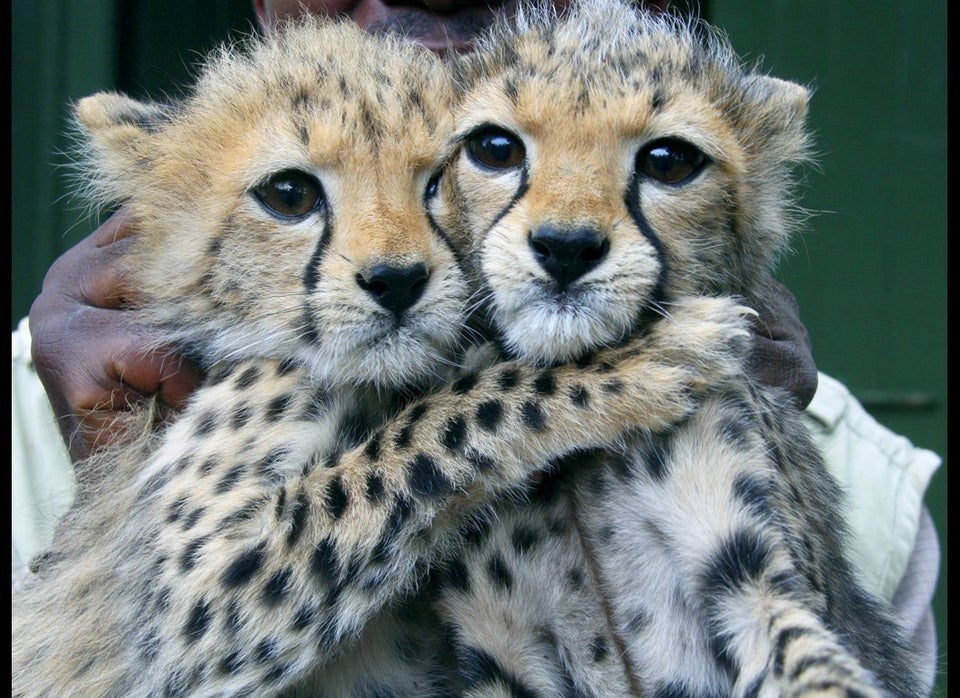
What happens to all those bunnies and chicks that are given out for Easter?
For one thing, lots of them end up in animal shelters once kids run out of interest in their fluffy new pets. That's why many animal welfare advocates advise sticking to chocolate, in the strongest possible terms, and others encourage educated, responsible rabbit and chicken adoption this time of year.
For other bunnies and chicks: a Florida farmer is offering an alternative that comes with a life lesson. He'll take in unwanted Easter pets and eventually use them for food.
"I'm not going to make it all soft and cotton candy-like," says Tom Carey, owner of Sundew Gardens, an organic farm about half an hour from Orlando. "They will be very humanely processed down the road."
Of course, this proposal raises some rather uncomfortable questions, such as where meat comes from, and why even the most devout meat eaters might feel squeamish about eating an animal that, even briefly, was someone's pet. You might even get thinking about society's relationships with all animals.
"There are no small, insignificant lives," says Francis Battista, a co-founder of the Utah animal sanctuary and advocacy group Best Friends Animal Society. "Rabbits and chickens make great pets. Sadly, at this time of year some people relate to them as toys. Handing bunnies and chicks off to be a farmer to be eaten is akin to the widely banned practice of turning shelter animals over to research."
Carey says that indeed, it was the treatment of Easter animals that inspired this plan to begin with. Here's how he put it on Facebook:
Last month, I tried to order several varieties of egglayers for our farm, but the hatchery was booked until after Easter. Upon my inquiry, they admitted that the trivial baby chick thing for Easter still uses up a lot of their capacity. As a food producer for my community, this scares me. In a few weeks, when the kids get bored of changing the poop and cleaning the water bottle, consider bringing the young chicks to Sundew Gardens.
This was followed by some slightly less sympathetic comments about roosters and baby bunnies. But Carey says that some critters may be spared; hens, for example, will mostly be kept alive for egg-laying.
He also says the animals will have good grub, comfortable quarters, plenty of company and lots of dirt to dig around in -- right until their time is up.
"They'll be happy while they're alive. Down the road they will be providing food to hungry people," says Carey. "We're all part of the food chain."
Last month, I tried to order several varieties of egglayers for our farm, but the hatchery was booked until after Easter. Upon my inquiry, they admitted that the trivial baby chick thing for Easter still uses up a lot of their capacity. As a food producer for my community, this scares me. In a few weeks, when the kids get bored of changing the poop and cleaning the water bottle, consider bringing the young chicks to Sundew Gardens. (Sorry, we can't take the aged out tough as leather fighting roosters; leave them for Popeyes.) And we'll take the baby bunnies too.
Posted by Sundew Gardens on Thursday, April 2, 2015
Get in touch at arin.greenwood@huffingtonpost.com if you have an animal story to share!

